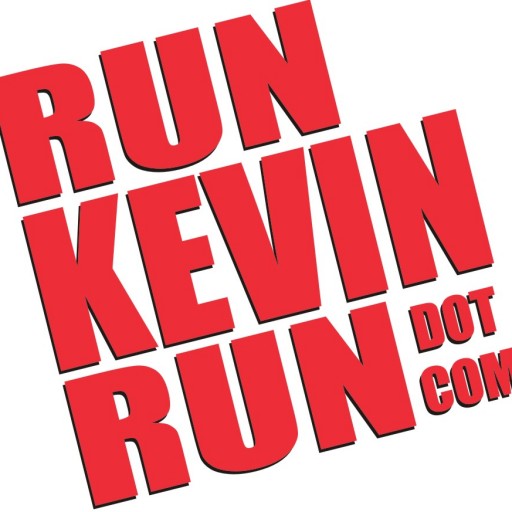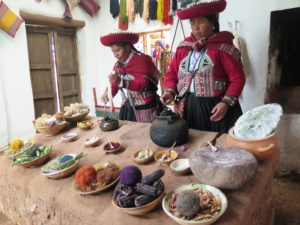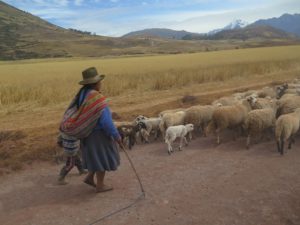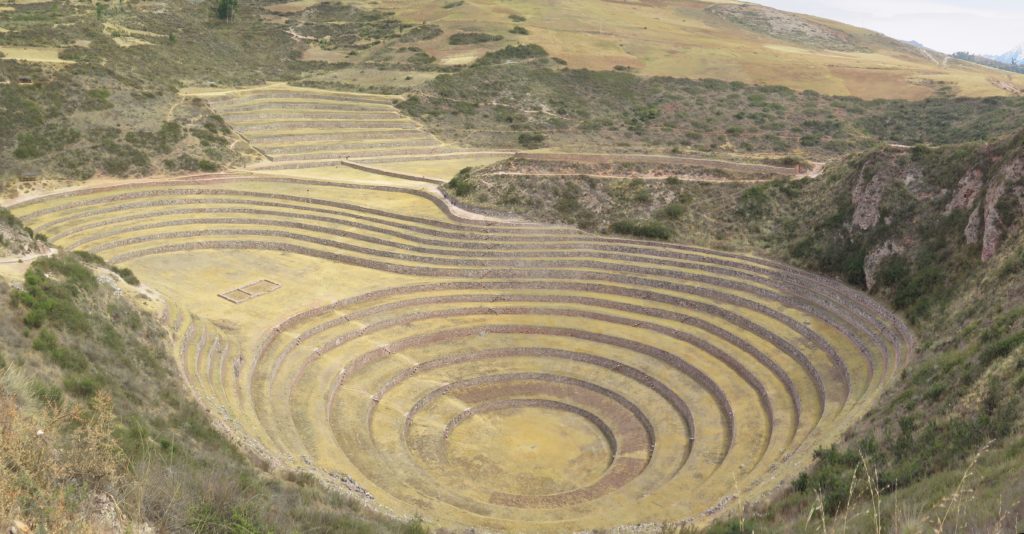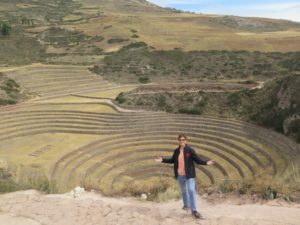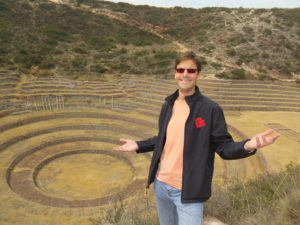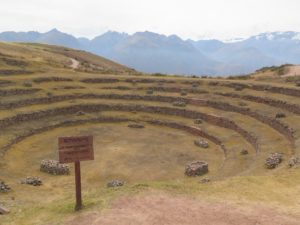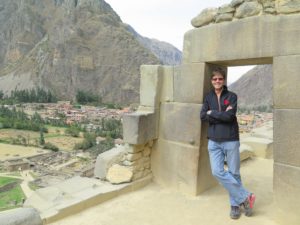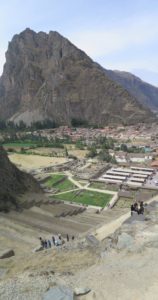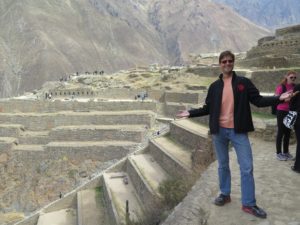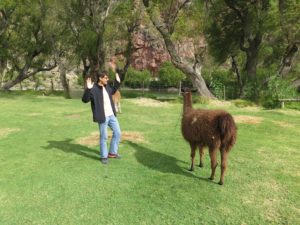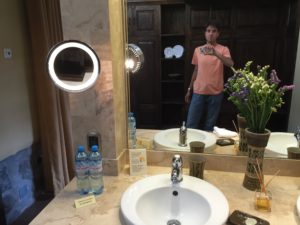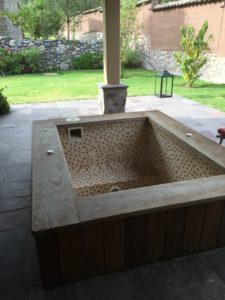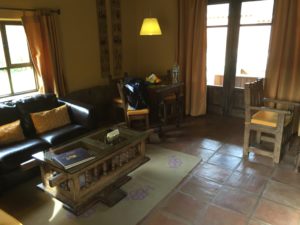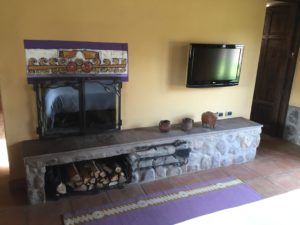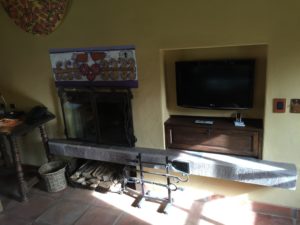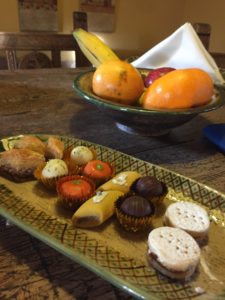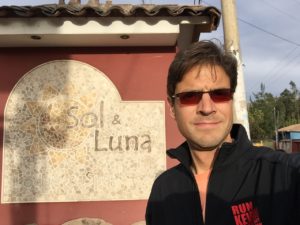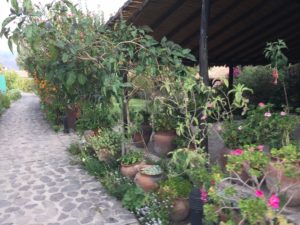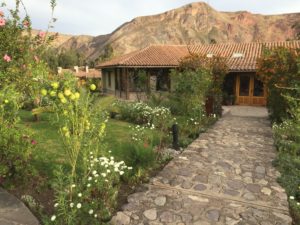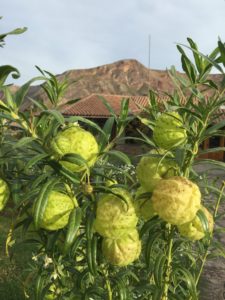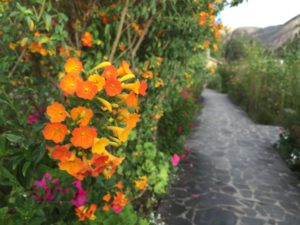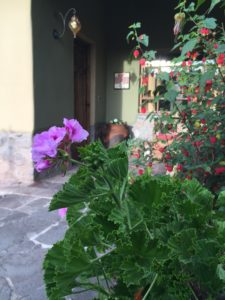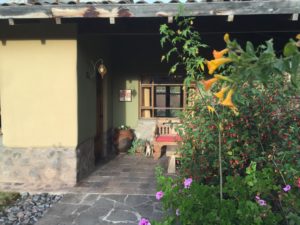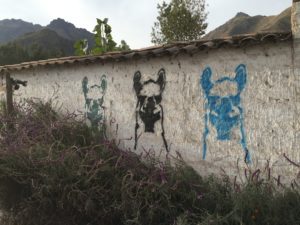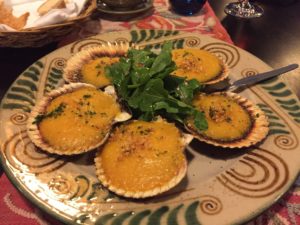June 8, 2016 – A Three Person Tour… A Three Person Tour!
It wound up being a three person tour – me and two 20-something sisters from the Midwest. Cheyenne Knox was from Fargo, while her slightly older sister Larissa the librarian was from Minneapolis. Our guide was Rosemary and our stunt driver was Robert. I say stunt driver as some of those winding unpaved roads required the skills of a Hal Needham to navigate and get through.
A few years ago, credit starting flowing to the Peruvian masses so whereas before only the wealthy could afford a new car, banks began issuing credit to more people thus enabling ever more cars to be bought and put onto the roads. That combined with a surge in tourism has led to more and more cars, buses, and tourist vehicles clogging the streets of Cusco. Still, though it required some aggressive squeeze plays on Robert’s part, we made good time leaving the city and were on our tour in short order. Here then are a few stray notes from our gridlocked escape into the countryside:
Cusco has one of the oldest university’s in Peru, founded in 1692; San Marcos University in Lima is the oldest university in South America, founded in approximately 1551.
Because of the winding and at times bumpy roads, it takes approximately 20 hours by car to go from Cusco to Lima; by comparison, I flew between the two cities in just over an hour.
The road we were taking also would take us into the jungle and the Andes Mountains. It’s really “the Amazon” or “Rain Forest” but the Spanish word given for the area translates as “Jungle” so sometimes that’s just what they call it.
Our first stop in the Sacred Valley region was in Chincharo (pronounced chin-char-o I think). In Incan times, potatoes were grown here in vast quantities and were key to food production. Later crops like barley and fava beans were introduced and now those three are the primary crops of the region.
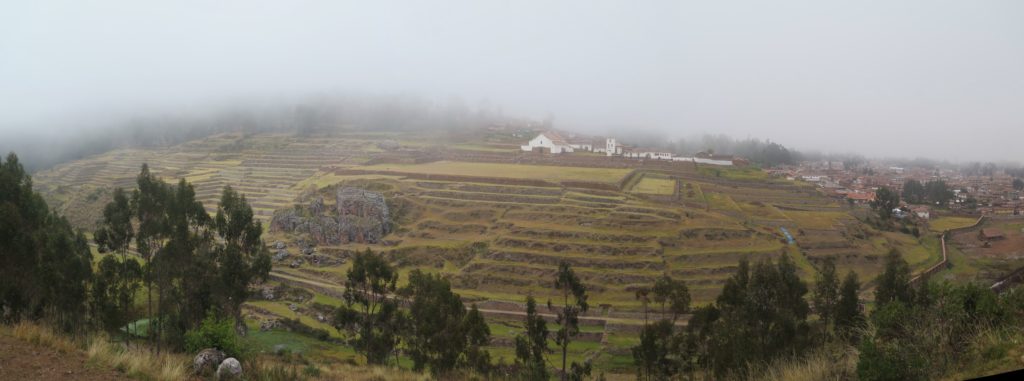
A market mini-mall of hand made goods was run by 12 families. Here we watched a presentation on natural dyes used to color the lamb, alpaca, and llama fur spun into strands to weave table runners, ponchos, sweaters, blankets, etc. The most amazing “fun with science” aspect of the presentation was a dried beetle they pluck off cacti. When crushed, this parasite yields a red dye… my understanding is that it’s not from the blood rather it’s from the crushed carapaces. This dye can be used for lipstick even and has a sweet smell. But when you mix in some salt, you can get orange dye. Other colors are equally created naturally — when you take fava beans you can grind them into green pigments. And there’s a tree root that when shaved becomes a natural soap for cleaning the wool (and one’s dyed hands from the aforementioned crushings).
No matter what was going on, the people of this mini-mall market would be spinning the wool into thread. Sometimes they do it while singing, while cooking, while eating, pretty much all the time, we were told; this may be because to weave an even simple patterned table runner takes 35-40 days… And quite a bit of thread too!
I opted not to buy any of their weavings — I was tempted to get a table runner for my mom but even at an exchange rate of taking a third of the price to get the US equivalent, 220 sols or $70-ish seemed pricey to me. But it was assuredly handmade and if it took 35-40 days, I can understand the pricing.
They did allow me to try on a poncho and hat “for free” so I could snap a photo. If there’s one thing I learned at this village that stands above all the rest – I will NEVER be able to pull off a Peruvian poncho.
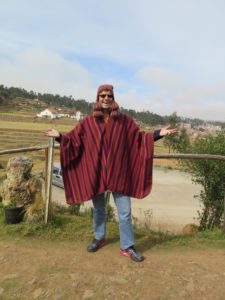
The next town we drove through was Maras, a town well known for its salt evaporation ponds which are still being used. I was more intrigued by all the great hats we were seeing in Peru. Besides the technicolor hats with the dangling chin strap ties, there was a great white top hat I saw women sporting. Kids in school uniforms, which looked more like track suits than anything else, sported color coordinated fedoras. In this town, the blue and white track suits were offset by a golden hat.
The big show-stopper of the tour was Moray (pronounced More-Eye). A valley of concentric terraced circles, this place served as the Incan greenhouse laboratory. Soil samples from all areas of the empire were placed at various terrace levels to best approximate the climates of the regions. Seeds were planted then to see what would grow best where and cross pollinated hybrids were created to improve agricultural production. There were three main “labs” we saw – the main large terraced circles, a medium sized area, and a smaller version.
The clumps of rocks in some of the photos are there for reconstruction of the terrace walls and are not some Incan ritual formation. They’re present day necessities for re-construction and preservation purposes.
Our last major tourist stop on this tour of the Sacred Valley was to Ollantaytambo. Here we climbed the Terraces of Pumatallis. It was a tough climb even for me and so I was kinda glad Mom opted to skip this extension tour. I missed hanging out with her but I suspect she wouldn’t have had such a great time with the high altitude stair challenge. I needed several breaks amongst the terraces, huffing and puffing but that was probably all for the best as it afforded a few more photo opportunities.
A leisurely buffet lunch at a riverfront café capped the tour. I tried the baked alpaca but was unimpressed. The desserts were all surprisingly bland as well… but the true treat saw a llama, alpaca, and vicuna tethered by the river. My best efforts to get to know the llama produced this “I come in peace… como se llama, Senor Llama?” photo:
I got dropped off at my hotel for the evening, a fru-fru resort called Sol y Luna. It’s not my speed but it’s lovely. Unfortunately, I left my camera in the van and freaked out a bit; a frantic rush back to the front desk and a phone call or two later, and the camera was found. Crisis averted but my heart was racing.
The hotel features “casitas” not rooms and I’m in casita 40 – way the hell through the winding flora stuffed walkways; for a romantic getaway it’d be a delight. For a single dude just trying to make his way to Machu Picchu, um, it’s a bit of overkill. Do I really need two fireplaces? A jacuzzi? But the welcome desserts were delightful.
The hotel itself is attached to a school for children with special needs. I gather part of the proceeds from the hotel go to help fund the school. Part of me thought instead of spending their money on a gentrified luxury resort maybe that money could’ve gone directly to the school. But I suppose in some warped way the hotel investment becomes an ongoing revenue stream to hopefully perpetuate the school in the long run.
I walked a mile into the small town on a dusty road but didn’t see any restaurants that grabbed me. I did see this great graffiti logo for a backpackers hostel. It made me think “The Tres Llamas” would be a good biker gang name for a TV show.
I kinda wanted something light for dinner but the hole-in-the-wall food options as I walked back to my hotel didn’t offer the sorta salad-y entrée I was in the mood for. I stopped in three mini marts on my way back looking for Coke Zero. I realized then that I was truly in the Peruvian countryside, and for some reason only fully loaded Coca-Cola is offered; you either take the real thing or nothing at all. I went with nothing — regular Coke is too sweet and too many calories for me these days.
In the end, I wound up at the hotel’s “casual” restaurant called Waya. I ordered an overpriced glass of wine and the scallops, skipping the salad option I originally wanted. The scallops were super sweet in a sauce that overwhelmed everything. The dish was sickeningly sweet; it was a major bummer but the Syrah felt nice and light at least.
It’s been a day of information overload. I suspect I retained 5% of what Rosemary told us today, if that. But that’s still 5% more than I knew before the day started.
Tomorrow is Machu Picchu. The climb may be tough again — this altitude ain’t kidding around. But given I’m not running and eating too much, perhaps a bit of a struggle is in order! This Kevin needs to run again soon… But probably only AFTER I get back to the states I think. The biggest roadblock to running in Peru is that I asked my mom to take my smelly running clothes home so she could wash them and forgetting I hadn’t packed a spare pair. Live and learn. Always pack a spare set of running gear. You never know when you’ll over order and need to run off the calories. And you never know when you’ll be jonesing to put a few miles in on a Peruvian dirt road.
